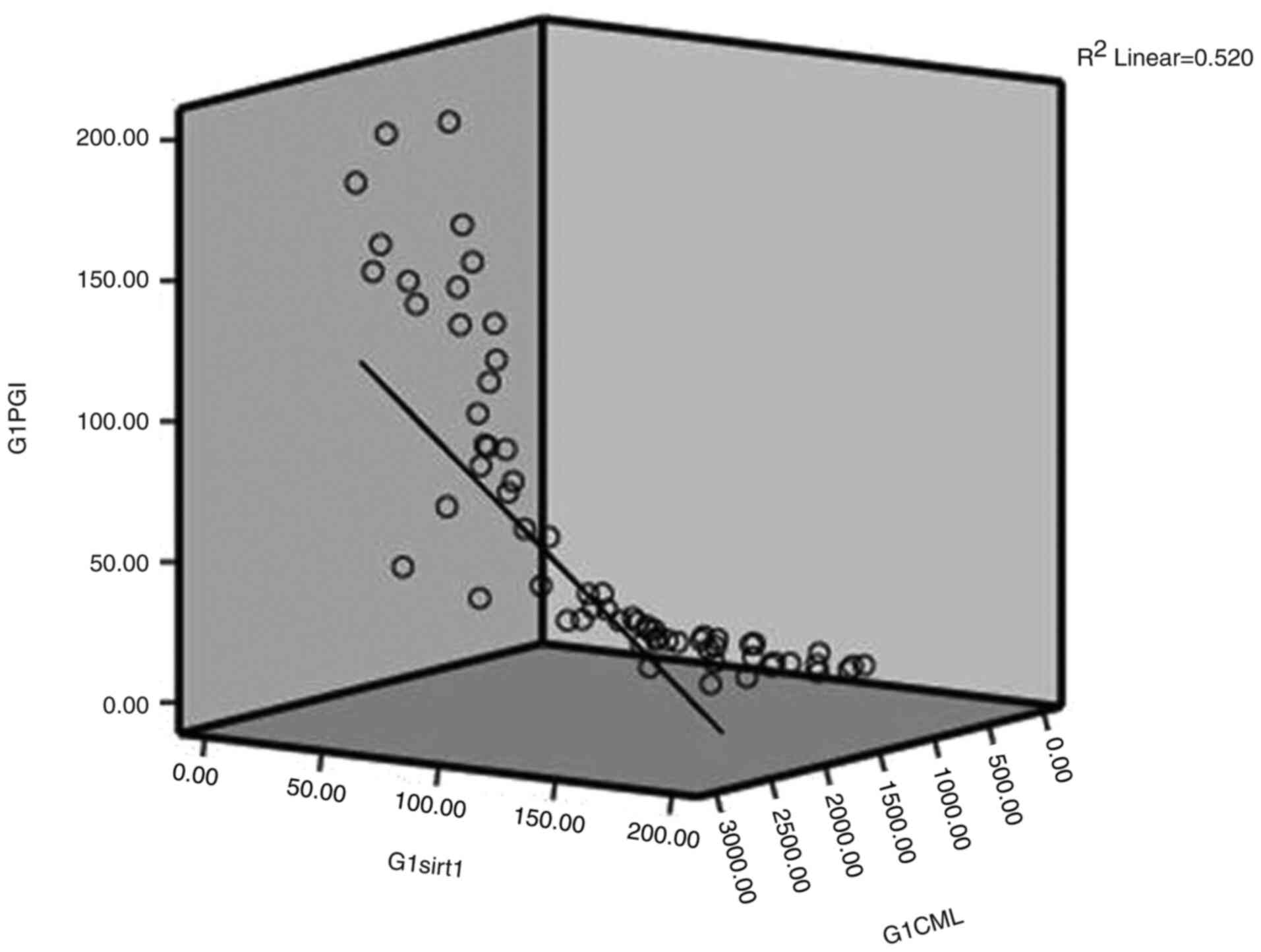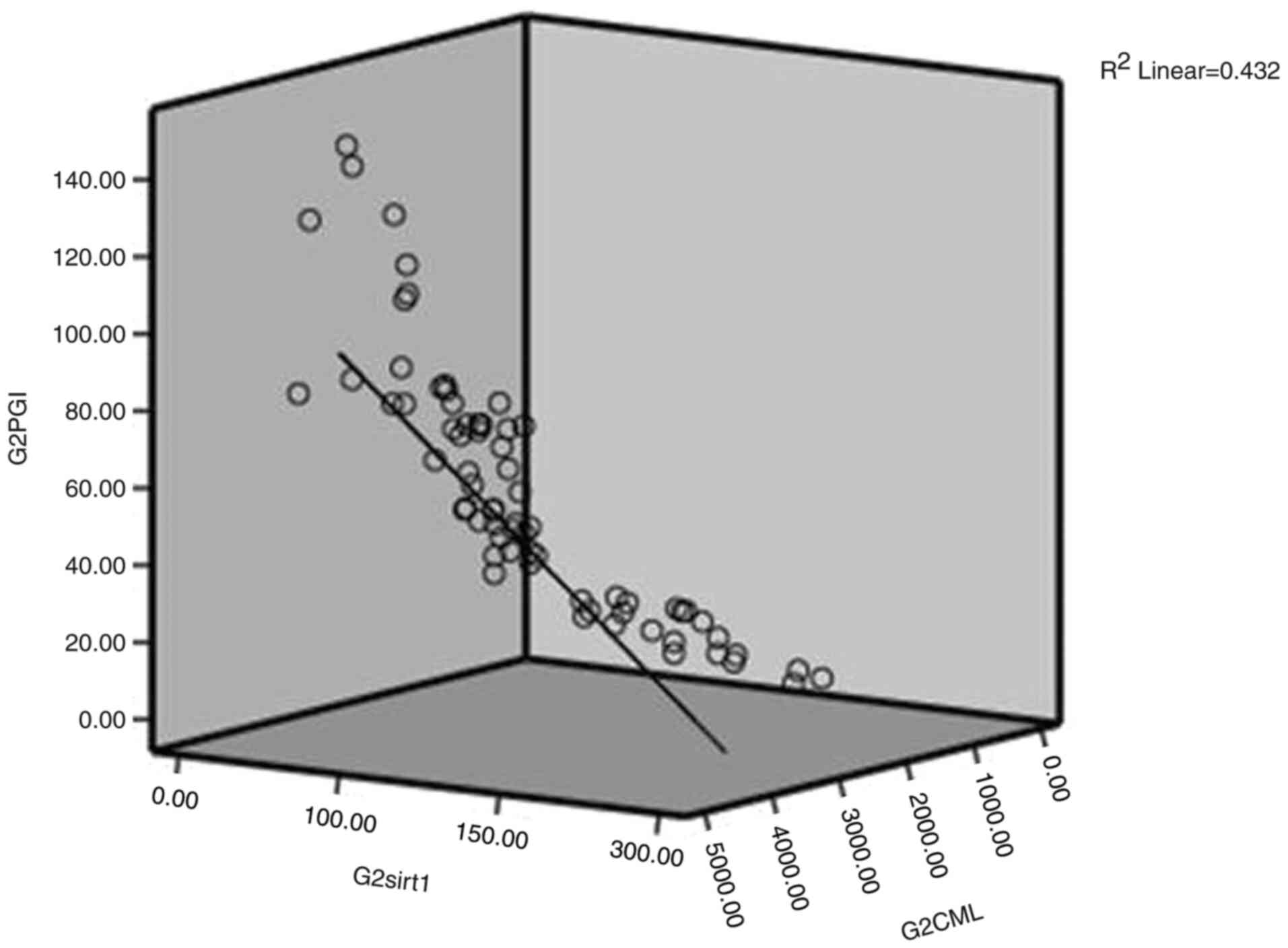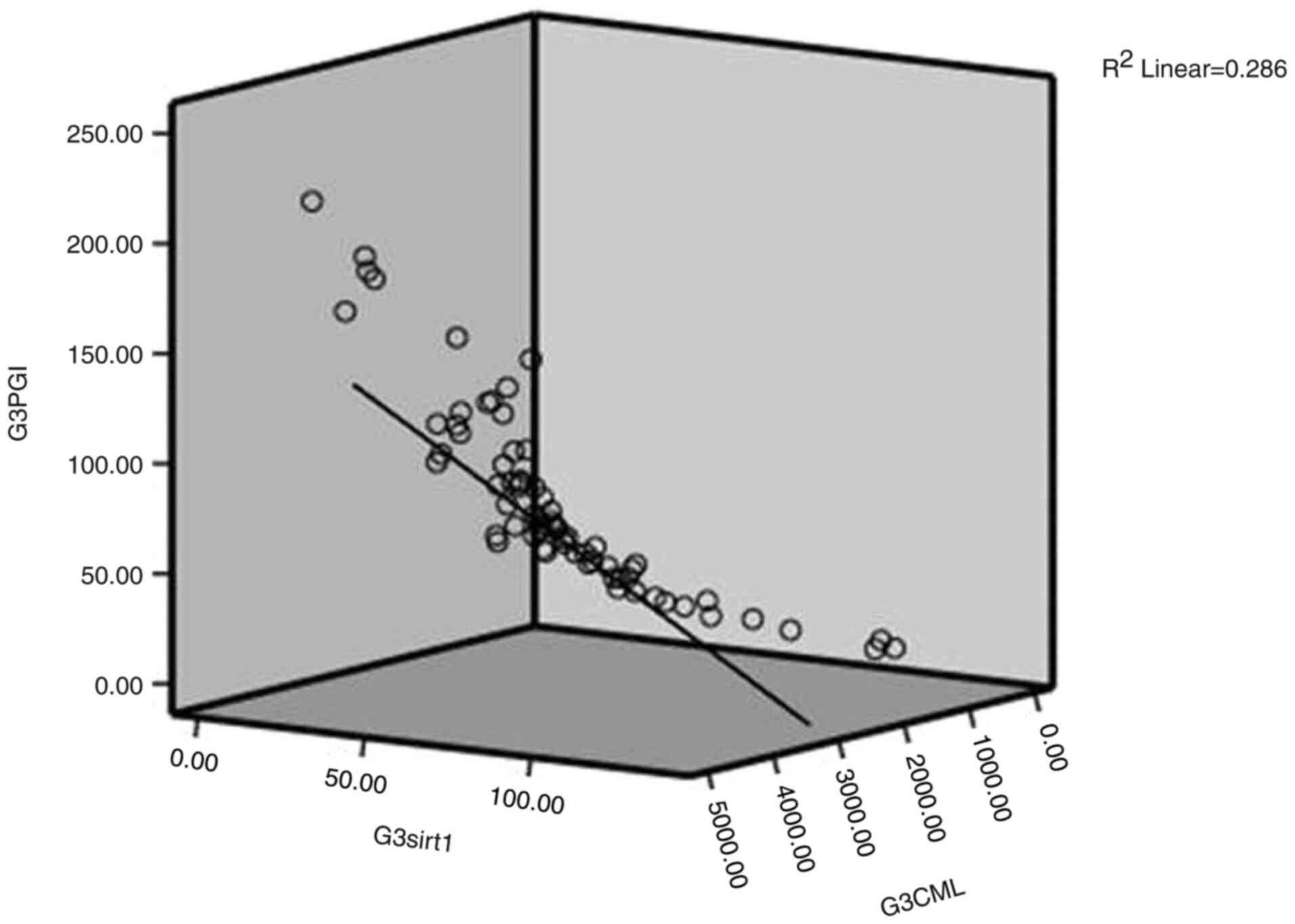Protein glycation index and pro‑atherogenic indices from laboratory to bedside: Markers of prognostic significance in diabetes mellitus
- Authors:
- Published online on: November 12, 2024 https://doi.org/10.3892/wasj.2024.293
- Article Number: 5
-
Copyright : © Ram Mohan et al. This is an open access article distributed under the terms of Creative Commons Attribution License [CC BY 4.0].
Metrics:
Total
Views: 0 (Spandidos Publications: | PMC Statistics:
)
Total PDF Downloads: 0 (Spandidos Publications: | PMC Statistics:
)
Abstract
The aim of the present study was to assess the efficacy of atherogenic indices in prognosis of diabetes mellitus and chronic kidney disease (CKD) and to derive a formula for protein glycation index (PGI) as a marker of aging. The present study evaluated pro-atherogenic indices and glycated proteins in a diabetic population. For the purposes of the present comparative cross‑sectional study, 210 subjects were recruited into three groups: Group 1, controls (healthy subjects; n=70); group 2, which included patients with type 2 diabetes mellitus (T2DM; n=70); and group 3, which included patients with T2DM and CKD (n=70). The study comprised 115 male subjects out of the 210 study subjects constituting ~55% of the total study population. Group1 consisted of 31 (44.3%) males, group 2 included 47 (67%) males and group3 had 37 (52.8%) male subjects. The present study enumerated ratios and calculated parameters for the prognosis of T2DM and diabetic neuropathy. The median (25 to 75th percentile) of PGI in the healthy controls was the lowest at 15.99 (8.1‑71.4), in patients with T2DM it was 45.01 (17.48‑65.29) and in the patients with T2DM and CKD it was 58.2 (33.5‑90.0). In addition, a significantly inverse correlation was found between PGI and the anti‑aging molecule, Sirtuin1 (‑0.823, ‑0.799 and ‑0.612 in groups 1, 2 and 3 respectively). Furthermore, there was a significant positive correlation between PGI and carboxymethyl‑lysine (0.537, 0.624 and 0.666 groups 1, 2 and 3 respectively). In summary, the present study demonstrates that PGI is a calculated parameter which serve as an index not only for T2DM, but also for other aging‑related disorders, since it includes pro‑aging molecules and anti‑aging molecules. However, further studies using large cohorts with different aging disorders in the same population are required to validate the findings presented herein on PGI.













